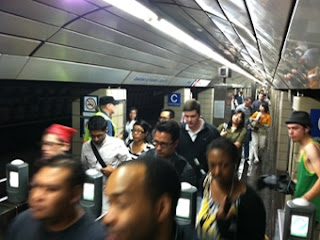New Jersey Governor Chris Christie plans to endorse a $1 billion extension of PATH service to Newark Liberty International Airport, according to several sources familiar with the governor's plan. The approval of extending PATH service to Newark Liberty International Airport would mean the money is almost certain to be allocated in the Port Authority's upcoming capital plan. It is not yet clear when Mr. Christie will publicly announce his support for the project.
Governor Christie's backing would almost certainly assure that the extension project, which has been mulled over by transit officials for more than a year, would be included in the Port Authority of New York and New Jersey's roughly $30 billion capital plan, which is expected to be released to the public in the coming months.
The extension would be of special benefit to lower Manhattan PATH riders, who would be able to take direct service from the World Trade Center complex all the way to Newark Airport and transfer to the Air Train to travel to the airport's terminals.
The extension also would offer airport riders a more direct service to Newark-Penn Station on the NEC, a major transfer point to New Jersey Transit rail, light rail, and bus services.
Downtown PATH service currently ends at Newark Penn Station, and the most common approach for riders coming from Manhattan now is to take New Jersey Transit from Penn Station in Manhattan to the Air Train, a route that requires downtown riders to first head to midtown.
Air Train Newark, the three-mile monorail line, opened in 1996 and was extended to the Northeast Corridor in 2000 with the opening of Newark Airport/Rail Station. The station is served by Amtrak and New Jersey Transit.

Airport advocates hailed the decision.
"A one-seat PATH ride from lower Manhattan directly to Newark Airport Air Train is a major step forward," said Joseph Sitt, founder of the Global Gateway Alliance to encourage improvements in the New York City-area airports.
Advocates note those working on airport grounds would also benefit from the improved access to airport terminals.
They also note that PATH's passenger capacity far exceeds that of connecting monorail service, setting up a potential passenger bottleneck for those transferring at Newark Airport/Rail Station.
The project would generate more than $1 billion in design and construction work while adding permanent jobs for the link's operation. The Port Authority has yet to release a start or estimated completion date for the project.














